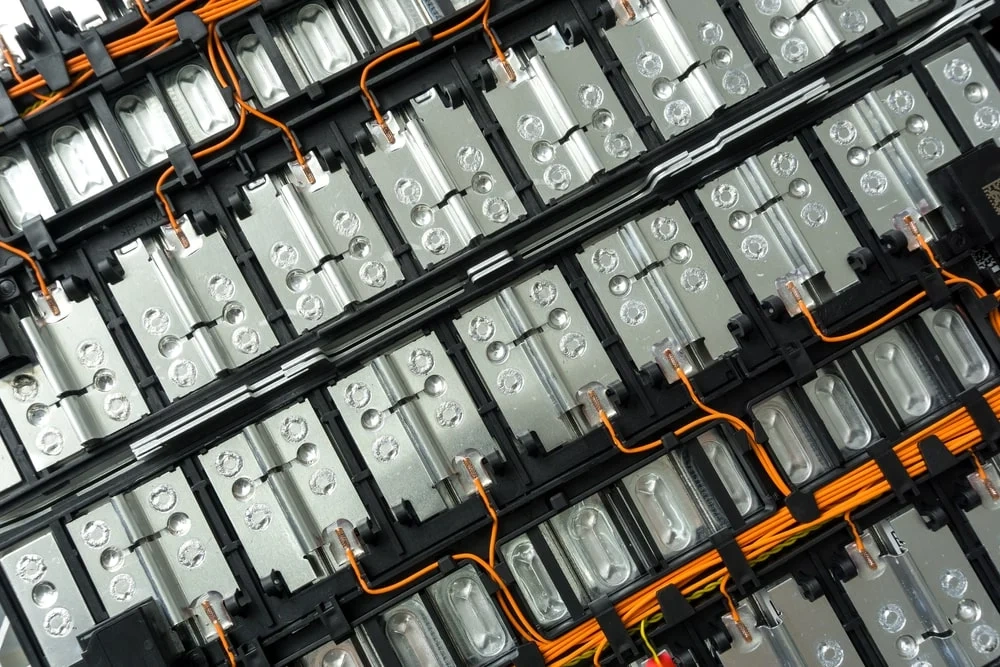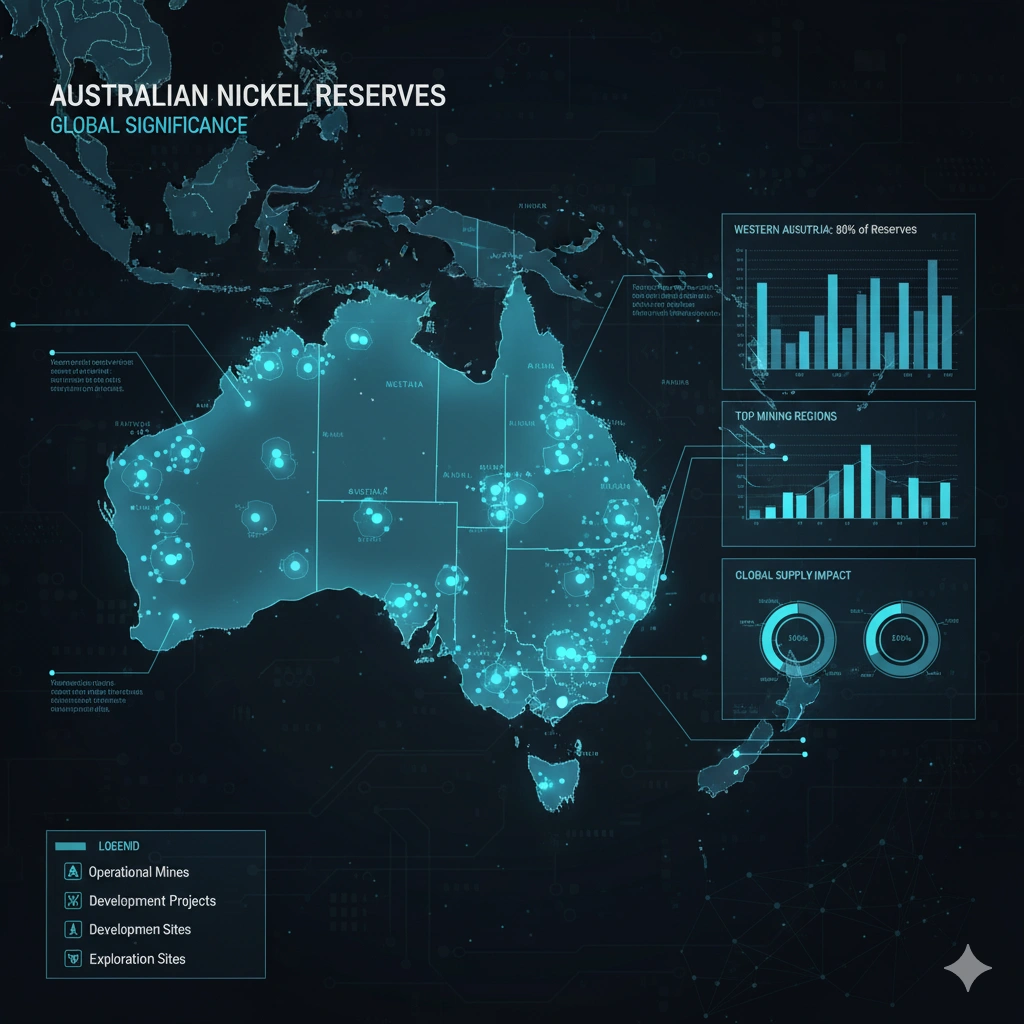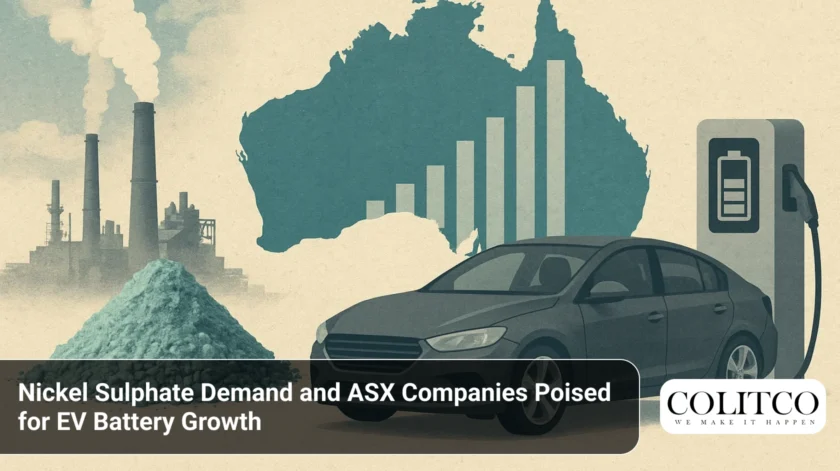Nickel sulphate has rapidly emerged as one of the most essential inputs of the world’s energy transition. Unlike traditional nickel products, which have their primary use in stainless steel, nickel sulphate is a high-purity chemical intended explicitly for the batteries of electric vehicles (EVs), particularly NMC cathode-based batteries. As the world’s automobile manufacturers accelerate their drive towards electrification, the demand for nickel sulphate will increase exponentially, along with opportunities, but also pose problems for manufacturers.

Nickel sulphate is a critical ingredient in next-generation electric vehicle batteries.
Richly endowed with nickel reserves and a permissive regulatory environment, Australia is becoming an integral supplier to the global EV supply chains. Various ASX-listed companies are making significant investments in downstream processing, refining, and sulphate production to add value to raw ore exports. These range from diversified miners, such as BHP, to mid-tier companies, including IGO, and specialist developers, such as Queensland Pacific Metals (QPM).
This article examines nickel sulphate demand, EV growth forecasts, the role of ASX-listed producers, and the challenges they face. It provides a comprehensive overview of how Australia’s nickel sector is transforming in response to emerging market conditions and the impact this has on investors.
Growing Global Demand for Nickel Sulphate
Industry forecasts suggest that demand for battery-grade nickel could grow more than tenfold by 2040. The International Energy Agency estimates that the demand for nickel in clean technology will exceed that of stainless steel within the next decade. In comparison to Class I nickel or ferronickel used in industrial alloys, nickel sulphate is a requirement for cathodes with increased energy density, longer driving range, and better performance.
In 2022, global demand for nickel sulphate was below one million tonnes annually. Forecasts currently anticipate this to rise above four million tonnes in 2035. This explosive growth highlights the necessity for investment in refining capacity, as mining capacity cannot do so without concurrent processing plants.
EV Growth and Battery Chemistry Shifts
The increase in demand for nickel sulphate follows the trend of electric cars. It is projected that over 40 per cent of new vehicles sold around the world in 2030 can be EVs, with Europe, China and the United States being the early adopters.
Even though lithium iron phosphate (LFP) batteries are increasingly being found in price-sensitive markets at lower prices and are less reliant on key minerals, high-nickel chemistries remain prevalent in the high-end and range-extender EV products. Nickel sulphate demand is also high as leading manufacturers such as Tesla, General Motors, and Volkswagen continue to rely on this cathode extensively.
 Western Australia and Queensland host some of the world’s largest nickel reserves.
Western Australia and Queensland host some of the world’s largest nickel reserves.
This split in chemistry is forming a two-way market, one LFP-dominated volume-market EVs, and the other nickel-based chemistries in high-performance cars. This dualism presents both a threat and an opportunity to ASX-listed manufacturers. When LFP growth is scale-based, then it may strangle demand. As long as manufacturers are willing to keep expanding the range and shortening charge time, though, nickel sulphate will not go away.
Australia’s Strategic Position
Australia, one of the world’s largest nickel producers, boasts substantial reserves in Western Australia and Queensland. For decades, it has been exporting most of this as concentrates or intermediate products to overseas markets. But with the new international focus on supply chain resilience, the country has shifted its attention to investing in downstream processing.
Government policy matters. Australian policy puts nickel in the spotlight with the offer of finance, tax incentives, and infrastructure assistance for local refining. It mirrors the policy of global car manufacturers and battery producers seeking secure, ESG-compliant supply chains outside the usual suspects, including Indonesia, Russia, and the Philippines.
By increasing its refining capacity, Australia can reap higher value throughout the EV supply chain. ASX companies are leading the charge by integrating mining operations with processing facilities, offtake agreement stakes, and leveraging Australia’s governance and environmental standing.
ASX Companies in the Spotlight
BHP Group (ASX: BHP)
Its Western Australian Nickel West operations position BHP as the most significant Australian player in nickel sulphate. Its Kwinana refinery is capable of producing 100,000 tonnes of nickel sulphate per annum, one of the world’s largest refineries of that type. BHP has also signed offtake agreements with Tesla, marking its place in global EV supply chains. The company, however, also faces difficulties due to volatile nickel prices and rehabilitation liabilities.
IGO Limited (ASX: IGO)
IGO owns the Nova nickel-copper-cobalt mine and produces high-grade nickel, copper, and cobalt concentrates. It has invested in downstreaming through the Kwinana refinery, thereby placing itself in a vertically integrated battery supply chain. Its partnership approach allows it to leverage synergies between refining and mining.
Queensland Pacific Metals (ASX: QPM)
QPM is advancing the Townsville Energy Chemicals Hub (TECH Project), which will feature the production of high-purity nickel and cobalt sulphates. Already, with an annual production of 16,000 tonnes of nickel sulphate proposed, the project has achieved global offtake contracts for General Motors and LG Energy Solution. Its focus on low-carbon processing and ESG is its differentiator.
Panoramic Resources (ASX: PAN)
Panoramic Resources operates the Savannah Project, a nickel concentrate producer located in Western Australia. While it is not yet producing nickel sulphate, the project does have downstream extension optionality in the future, particularly with the accelerating global demand.
Other Emerging Players
A few other ASX-listed companies, including Ardea Resources and Mincor Resources, are also working on nickel projects that could be converted to sulphate production in the future. These juniors exemplify the diversity of the Australian pipeline.
Market Dynamics and Sulphate Premiums
Nickel sulphate is traded at a premium over LME nickel because of additional refining stages and more stringent purity levels. While the global nickel prices have been affected by oversupply from Indonesia, the demand for sulphate has been stronger. Battery manufacturers are willing to pay a premium for high-quality sulphate of very high specifications.
This creates a disparity in market outcomes: while nickel miners would lose from price volatility, refiners can squeeze out additional margins. To investors, this highlights the importance of considering not just mining assets but also downstream integration.
Key Challenges Facing Producers
Despite having great demand potential, producers of nickel sulphate face severe challenges.
- Environmental footprint: The production of laterite ores is carbon-intensive, raising concerns about sustainability.
- Geopolitical attention: Indonesia dominates global supply, and with it, the dangers of overreliance.
- Chemistry uncertainty: Rapid adoption of LFP batteries has the potential to reduce the scale of nickel demand growth.
- Capital intensity: Refining schemes involve billions of upfront expenditure and extended lead times to market.
These issues remind Australian producers to differentiate themselves on ESG compliance, efficient technology, and strategic partnerships.
ESG performance is now becoming an essential differentiator in the nickel market. Governments and automakers are increasingly focusing on traceability, carbon footprint, and sustainable supply chains. Australia, with its robust regulatory framework, is well-positioned to supply ESG-compliant nickel sulphate.
European and North American policies, such as the EU Battery Regulation and the US Inflation Reduction Act, encourage sourcing from credible jurisdictions. This presents a competitive advantage for ASX-listed producers over supply from less-regulated jurisdictions.
Financing and Offtake Agreements
Financing sulphate projects at scale remains a problem, particularly for junior and mid-tier miners. Offtake deals with top-tier global automakers typically require obtaining funding. QPM’s deals with GM and LG Energy Solution are a template of success. The larger players, such as BHP and IGO, have more room to finance internally but remain cautious about capital deployment due to market volatility.
Outlook for Investors
There are three possible scenarios, and they set investor expectations:
- Base Case: Nickel overhang extends to 2027, but sulphate premiums have margins to hold for well-positioned producers.
- Upside Case: Strong EV adoption and supply rationalisation push sulphate prices, with benefits flowing to integrated players.
- Downside Case: LFP dominance and Indonesian oversupply pinch margins, undermining project economics.
For investors, it is a matter of identifying businesses with binding offtake agreements, good ESG credentials, and flexible financing models.
Also Read: Forex Tech & AI: Can AI Forecast FX Swings That Help Commodity Investors?
Final Thoughts
Nickel sulphate is rapidly becoming one of the most critical inputs in the global EV value chain. Demand growth is driven by the trend towards electrification of clean energy, the adoption of high-performance battery chemistries, and the push for supply resiliency.
ASX-listed companies are well-positioned to be leading participants in meeting this demand. BHP has scale and demonstrated operations, IGO has combined mining and refining exposure, and QPM has a high-growth development narrative with global partnerships. Panoramic and other emerging participants have optionality into the future.
With issues such as price volatility, environmental concerns, and competition from LFP chemistry, the outlook for nickel sulphate remains resilient. For investors, opportunity lies in companies that can strike the right balance between production and ESG compliance, while securing long-term offtake agreements.
With the EV revolution racing ahead, demand for nickel sulphate is expected to continue increasing, and ASX-listed producers have the best chance of unlocking substantial value in this revolutionary sector.
Frequently Asked Questions (FAQs) on Nickel Sulphate & EV Batteries
- What is nickel sulphate and why is it important for EV batteries?
Nickel sulphate is a high-purity nickel salt used as a precursor for cathode materials in lithium-ion batteries, especially those using nickel-manganese-cobalt (NMC) chemistries. It contributes to energy density, enabling longer driving range in electric vehicles. - How fast is the nickel sulphate market expected to grow?
In 2024, the nickel sulphate market was valued at approximately USD 4.82 billion, with forecasts projecting it could grow to about USD 21.35 billion by 2034, implying a compound annual growth rate (CAGR) near 16.2%. - What factors drive the pricing of nickel sulphate?
Key drivers include the price of base nickel, costs of energy and reagents, capacity utilization rates, demand from battery and precursor manufacturers, and regulatory or trade policy shifts. - How do battery-grade nickel sulphate prices behave relative to raw nickel?
Battery-grade nickel sulphate typically commands a premium above refined nickel because of extra processing requirements and purity standards for electric vehicle battery use. The premium fluctuates with supply-demand conditions in the battery market. - What challenges do nickel sulphate producers face?
Challenges include environmental and carbon emissions from processing, competition and oversupply (especially from Indonesia), shifts in battery chemistry preference (e.g. toward LFP), capital intensity of refining, and ESG and regulatory pressures. - Where is nickel sulphate currently produced?
Major production occurs in Asia, particularly in China, Japan, and Taiwan, and increasingly in regions connected to battery manufacturing. Some production also comes from dissolving high-purity nickel metal or from refining intermediates like mixed hydroxide precipitate (MHP). - Can nickel sulphate production exceed demand in the near term?
Yes, projections indicate that nickel sulphate production has at times surpassed demand. Analysts expect supply may further outpace demand in the short to medium term, especially if new refining capacity is commissioned ahead of demand growth. - How does battery recycling relate to nickel sulphate supply?
Battery recycling processes can recover nickel, which can then be converted into nickel sulphate. As EV fleets mature, recycling could become an increasingly significant supply source.













